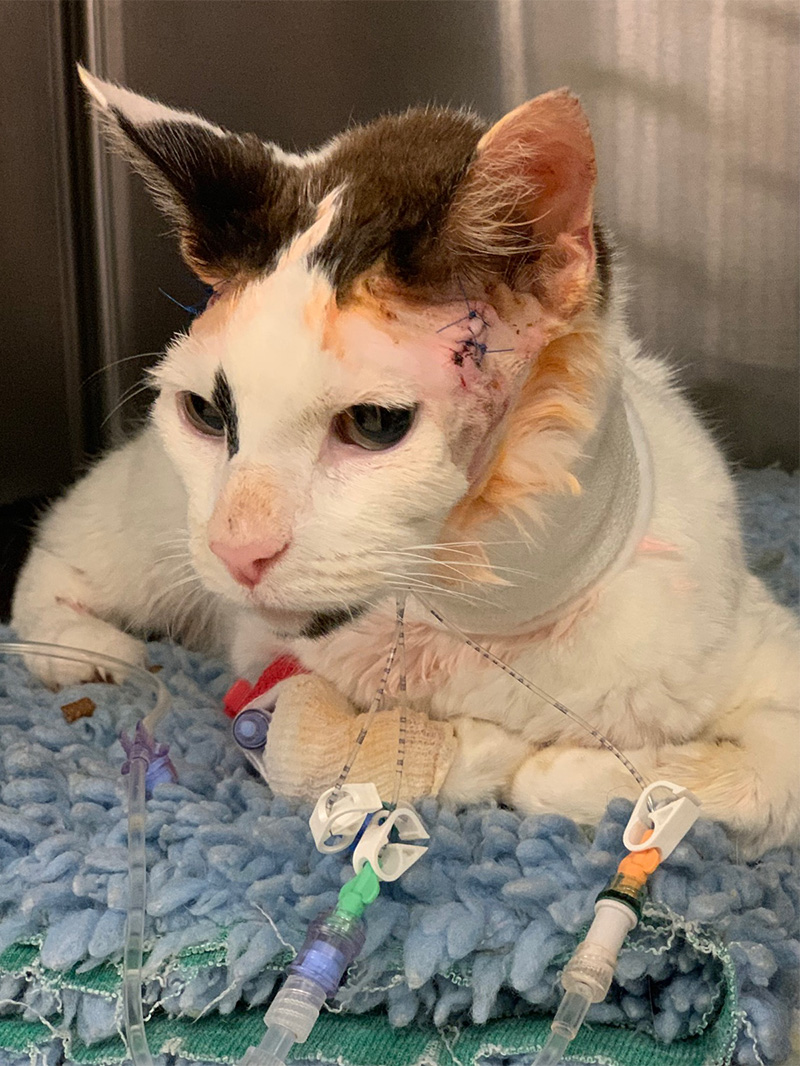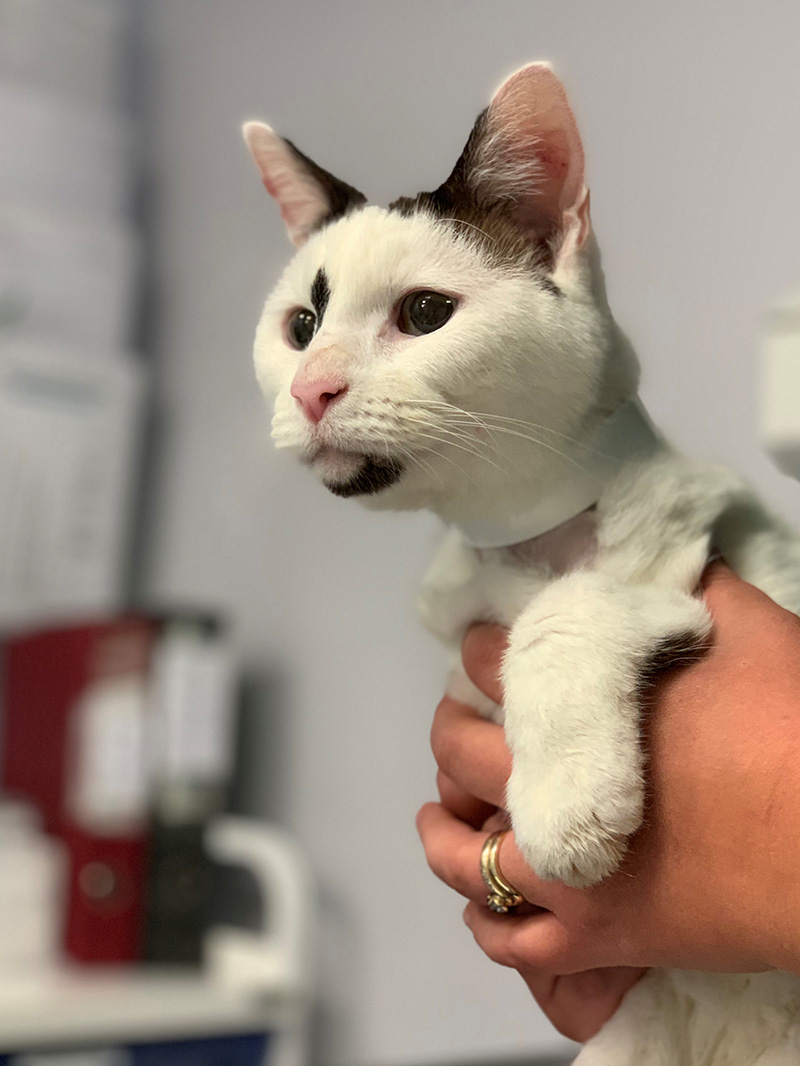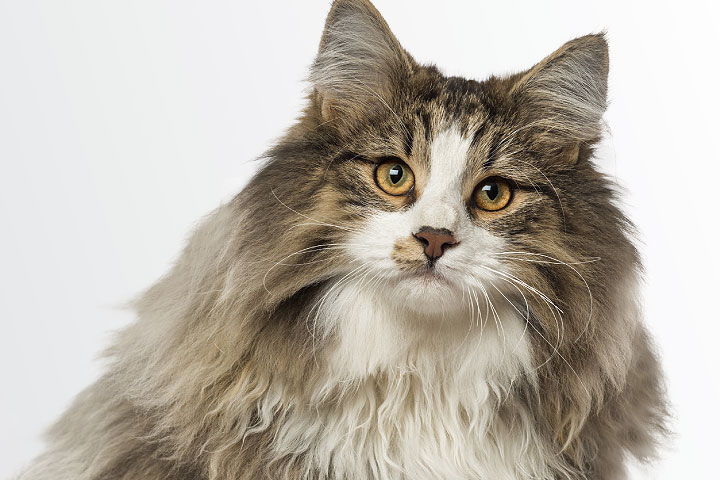acromegaly in cats uk
Acromegaly In Cats Uk Acromegaly is a disease that progresses slowly and symptoms will take some time to start showing. Common symptoms associated with insulin resistance include weight loss despite a good appetite and increased thirst and urination.

Acromegaly In Cats The Veterinary Nurse
Feline acromegaly has been reported infrequently in the veterinary literature and current knowledge of this endocrinopathy is based on limited numbers of animals with relatively advanced clinical signs.

. Monday May 2 2016. Acromegaly should be considered as a possible cause of difficult to regulate and high dose diabetic cats. The same Tight Regulation protocol used on Diabetic Cat International for non acromegalic works very well for cats with acromegaly and will help you control your cats BGs.
Another that one in four diabetic cats in the UK is suffering from the same². Acromegaly is the clinical syndrome which results from this with the classic broad facial features prognathia inferior snoring and stertor due to excess tissue growth in the airways myocardial thickening and large paws. It is more common in cats than dogs.
Hypersomatotropism is the preferred term for this disease as GH excess is often present for a long time before clinical acromegalic features are noted. Further Reading Publications Refereed papers. In cats it is due to GH-secreting tumors of the anterior pituitary.
The origin of this alteration in cats is the presence of a tumor in the pituitary gland. Neissen states Acromegaly one of the endocrinopathies in the. Niessen S J 2010 Feline acromegaly an essential differential diagnosis for the difficult diabeticJ Feline Med Surg 12 1 15-23 PubMed.
Unlike growth hormone IGF-1 concentrations are less likely to fluctuate over the course of the day since most IGF-1 is protein-bound giving it a longer half-life in the body. Affected cats can develop gradual changes in their appearance but because the disease develops over a long period of time owners may not notice any problems. Acromegaly in cats.
The prevalence amongst non-diabetic cats is currently unknown although these cats would be expected to become diabetic in the long-run. Serum IGF-1 measurement is the most commonly used diagnostic test for feline acromegaly and is readily available in the United States. Acromegaly is an endocrine disease caused by a tumour in.
Diabetic cats with variable control examined by general. The estimated prevalence of acromegaly in cats in the uk is between 1 in 800 to 1 in 1000. Acromegaly in cats is a condition in cats caused by excessive growth hormone in the body which is usually secondary to a pituitary tumor explains Dr.
Cardiomegaly and azotemia develop late in the disease. An Acro Cat is usually suffering from significant pain as a result of the uncontrolled growth of bone and tissue you need to talk to your vet about appropriate analgesics to help. Some cats will show very few symptoms even when the disease is established.
Treat the pain. Acromegaly was thought to be a rare condition but a recent UK study of diabetic cats with poor to adequate glycemic control showed that nearly a third of them showed signs of acromegaly. Acromegaly is most commonly seen in older 10 years old neutered male cats that have insulin-resistant diabetes mellitus.
Acromegaly is a rare but very dangerous condition that affects cats of all ages breeds and genders. This study was undertaken to screen diabetic cats for the presence of acromegaly. This article describes the pathophysiology and diagnosis.
The disease is therefore likely currently underdiagnosed. Home acromegaly cats in uk. However cats of any age or sex can develop acromegaly.
Signs related to diabetes mellitus are typically the first clinical signs noticed. Acromegaly is the term used in human medicine to describe a condition resulting from chronic excessive growth hormone GH secretion. Acromegaly In Cats Uk Acromegaly is a disease that progresses slowly and symptoms will take some time to start showing.
Its a rare disease but unfortunately it can become quite serious. Prevalence of acromegaly amongst diabetic cats in North America and the UK was found to be around 1 in 4 diabetic cats seen in primary practice. Stjin Neissen of the RVC Feline Diabetes Clinic is leading the charge when it comes to clinical research on the prevalence of FD and Acromegaly in cats.
Acromegaly is caused by excess secretion of growth hormone GH in adult animals. Acromegaly in cats uk Wednesday March 2 2022 Edit. Renee Rucinsky a board-certified.
The disease is typically caused by an abnormal growth or tumor that affects the pituitary gland. In the following article well tell you more about acromegaly in cats. Acromegaly is most commonly seen in older 10 years old neutered male cats that have insulin-resistant diabetes mellitus.
Recognising this syndrome in these cats will be key to successfully managing the concurrent diabetes. It is more common in certain breeds than others but this disease is generally quite uncommon. However with increasing case experience this signalment may change.
Recent clinical studies at the RVC in the UK have brought to light the fact that Acromegaly is far more common than previously thought. Dunning M D Lowrie C S Bexfield N H et al 2009 Exogenous insulin treatment after hypofractionated radiotherapy in cats with. Because acromegaly is almost always fatal if left.
The term hypersomatotropism HST rather than acromegaly may be appropriate when describing the condition resulting from chronic excessive GH secretion in. Acromegaly in cats is a condition in cats caused by excessive growth hormone in the body which is usually secondary to a pituitary tumor explains Dr. Feline Acromegaly Acromegaly In Cats The Veterinary Nurse Acromegaly In Cats The Veterinary Nurse Woman Begs People To Stop Blaming Her For.
Recent references from PubMed and VetMedResource. Just like the normal non-acromegalic diabetic cat the acromegalic diabetic cat tends to be a middle-aged to older male neutered domestic short hair. Prevalence of acromegaly amongst diabetic cats in North America and the UK was found to be around 1 in 4 diabetic cats seen in primary practice.
Acromegaly is an endocrine disease consisting of hypersecretion of growth hormone GH. Growth of the extremities skull and muscles occur in some cats. One study has shown that one in three diabetic cats in North America suffers from acromegaly induced diabetes¹.

Woman Begs People To Stop Blaming Her For Her Fat Cat S Massive Size Metro News

Update On Feline Acromegaly Niessen 2013 In Practice Wiley Online Library

Update On Feline Acromegaly Niessen 2013 In Practice Wiley Online Library

Pioneering Hypophysectomy Treatment Reaches 100 Case Milestone

Acromegaly In A Non Diabetic Cat

Pioneering Hypophysectomy Treatment Reaches 100 Case Milestone

Acromegaly In Cats The Veterinary Nurse

Pdf Acromegaly In A Non Diabetic Cat

The Management Of Feline Hypersomatotropism Hs Acromegaly

Acromegaly In Cats The Veterinary Nurse

Acromegaly In Cats The Veterinary Nurse


